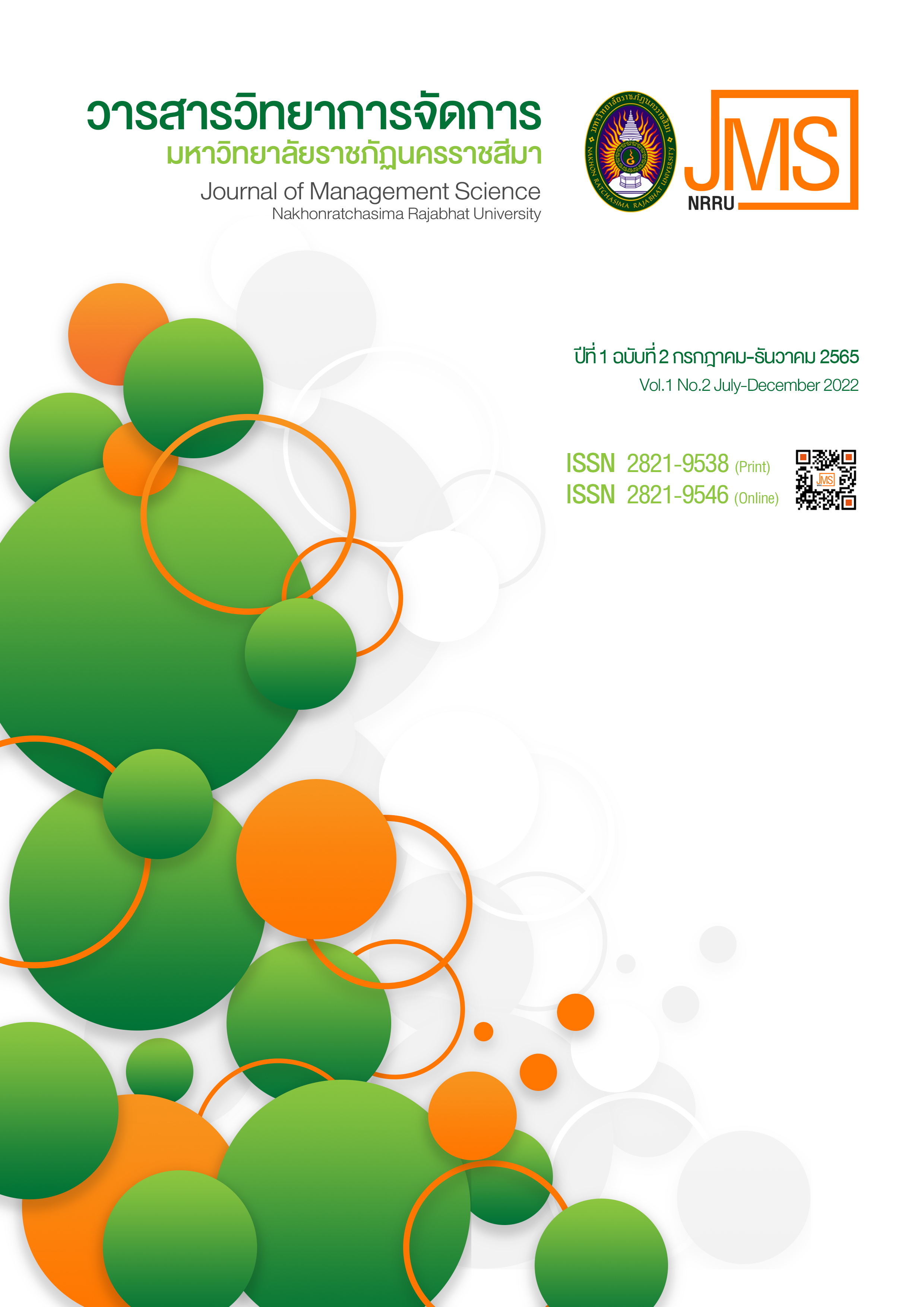Opinions of the Tourists towards the Services Selection of Pong Bua Ban Hot Spring Community Spa, Mae Pang, Phrao District, Chiang Mai
Main Article Content
Abstract
The purpose of this research was to study the opinions of the tourists towards the services selection of the Pong Bua Ban Hot Spring Community Spa, Mae Pang Sub-district, Phrao, Chiang Mai Province. The data was collected with 407 tourists. The research tool was the closed-ended and open-ended questionnaires. The statistics used in the data analysis were percentage, mean, and standard deviation. The results showed that the majority of the respondents were female business owners ,aged 21-30 years old, with single status, diploma or high vocational Certificate level, and earned less than 20,000 baht per month.
According to the tourists’ opinions, the most important service marketing mix factor affecting the selection of the spa services was the skilled and professional massagers. Their hospitality can be improved by the smiling faces and the service mind. The factor affecting the selection of the spa services with the least rating was the off-line promotion.Therefore, there should be brochures for regular or local clients. The most important tourism component factor was the tourism attraction by maintaining the beauty and the cleanliness of natural hot springs. On the contrary, the least rating factors were the tourism activities and the additional services. The health activities in the hot springs linking with the nearby tourist attractions and the safety service were also suggested.
Article Details

This work is licensed under a Creative Commons Attribution-NonCommercial-NoDerivatives 4.0 International License.
บทความในวารสารเป็นลิขสิทธิ์ของวารสารวิทยาการจัดการ มหาวิทยาลัยราชภัฏนครราขสีมา
บทความที่ปรากฎในวารสารเป็นความคิดเห็นของผู้แต่งเพียงอย่างเดียวซึ่งไม่เกี่ยวข้องกับวารสาร
References
กระทรวงการท่องเที่ยวและกีฬา. (2561). สถิตินักท่องเที่ยว. [ออนไลน์]. แหล่งที่มา : https://www.mots.go.th/more_news_new.php?cid=411. [1 พฤษภาคม 2564].
ธีระพงษ์ อาญาเมือง. (2563). การส่งเสริมสถานประกอบการสปาเพื่อสุขภาพในการเป็นศูนยก์ลางการท่องเที่ยว
เชิงสุขภาพในภาคตะวันออก. วิทยานิพนธ์ปรัชญาดุษฎีบัณฑิต สาขาวิชาการศึกษาและการพัฒนาสังคมคณะศึกษาศาสตร์ มหาวิทยาลัยบูรพา.
พิมพ์ลภัส พงศกรรังศิลป และคณะ. (2558). แนวทางการพัฒนาสิ่งอำนวยความสะดวกในแหล่งท่องเที่ยว
น้ำพุร้อนเค็มคลองท่อมจังหวัดกระบี่. กรุงเทพฯ : สำนักงานคณะกรรมการวิจัยแห่งชาติ (วช.)
และสำนักงานกองทุนสนับสนุนการวิจัย (สกว.)
ราชกิจจานุเบกษา. (2558). แผนปฏิบัติการพัฒนาการท่องเที่ยว ภายใต้เขตพัฒนาการท่องเที่ยวอารยธรรมล้านนา. [ออนไลน์]. แหล่งที่มา : https://www.mots.go.th/ewt_dl_link.php?nid=7120. [15 พฤษภาคม 2564].
ศิริวรรณ เสรีรัตน์ และคณะ. (2552). การบริหารการตลาดยุคใหม่. กรุงเทพฯ : ธรรมสาร.
สุดาดวง เรืองรุจิระ. (2543). หลักการตลาด. พิมพ์ครั้งที่ 9. กรุงเทพฯ : ยงพลเทรดดิ้ง.
เสรี วงษ์มณฑา. (2542). การวิเคราะห์พฤติกรรมผู้บริโภค. กรุงเทพฯ : ไดมอนด์อินบิสซิเนส เวิร์ด.
Buhalis, D. (2000). “Marketing the competitive destination of the future.” Tourism Management. 21(1) : 97-116.
Cochran, W. G. (1953). “Matching in analytical studies.” American Journal of Public Health and the Nations Health. 43(61), : 684-691
Kotler, P. (1997). Marketing Management: Analysis, Planning, Implementation and Control. 14th Global ed Upper Saddle River. NJ : Prentice-Hall.
Leruksa, C., Chaigasem, T. and Suephakdee, D. N. (2019). “An innovation model for international sport events city of Buriram Province, Thailand.” Veridian E-Journal, Silpakorn University (Humanities, Social Sciences and arts). 12(2) : 672-686.
Parasuraman, A., Zeithaml, V. A. and Berry, L. L. (1985). “A conceptual model of service quality and its implications for future research.” The Journal of Marketing. 49(4) : 41-50.


